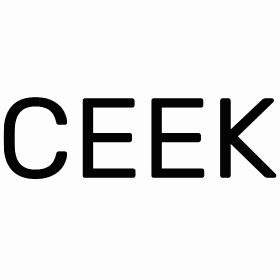Why Your Brand Needs to Maintain Engaging Presences Across a Variety of Social Platforms
Social media is still a top performer as a marketing channel for brands, and no matter what you might hear, its power for spreading brand awareness, converting new customers, and engaging with loyal shoppers hasn’t waned.
However, much has changed over the past decade of social media marketing. The number of channels out there has grown enormously, and the way that these different channels are used — and by whom — has likewise evolved a great deal.
Today, your target audience is active in many more channels than they ever were in the past, and there’s inevitably a lot of overlap. According to DataReportal’s latest report, people use an average of 6.6 social media platforms each month. But that doesn’t mean that you can just cover one or two platforms and consider you’re done. Channel diversification is crucial for a number of reasons.
Reach different audiences
Despite the aforementioned overlap, each social media platform has unique user demographics, characteristics and purposes. What’s more, different creators have strong followings on different channels. By maintaining a presence on multiple channels, you can reach several segments.
For example, over-40s make up 51% of Facebook users but only 36% of Instagram users, 30% of TikTok users, and 20% of Twitch users. Other channels reign supreme for 18-29 year-olds, who comprise only 29% of Facebook accounts but 39% of TikTok users and 50% of those on Twitch.
There are even key variations within each age group. For example, Pew Research reports that teen boys are more prevalent on YouTube, Twitch and Reddit than teen girls, while teen girls are more likely to use TikTok, Instagram and Snapchat than boys. In terms of ethnicity, you’ll find higher concentrations of Black and Hispanic teens on TikTok, Instagram, Twitter and WhatsApp than White teens.
As a result, when brands diversify their presence across numerous channels, they can reach a broader range of audiences and connect with potential customers who may not be active on other platforms.
Build stronger relationships
It’s not just audience demographics that vary across different social media platforms. Each one has its own distinct tone and atmosphere, as well as offering different features and formats for user interaction. For example, TikTok is more popular as entertainment, Reddit for community, or Twitter for news. Understanding the different network’s main utilities and popular formats can help you adjust your messaging per each channel.
Maintaining a presence on many channels enables brands to leverage each platform’s strongest engagement strategies and formats, whether those involve live video, stories, polls, and so forth.
Brands can also adapt content and communication styles to better suit the preferences of users on each platform. This way you can showcase different facets of brand personality, share diverse content, and engage with your audience in a more authentic manner that is a closer fit for the audience on that channel.
Creators are intrinsically good at this, too, and can effortlessly translate a brand message to content that seems native per each platform they’re on.
Doing so strengthens your branding authenticity and trust, ultimately driving more interactive and meaningful experiences for your audience, stronger connections, and increased customer loyalty.
Mitigate marketing risks
Putting all your eggs in one basket isn’t just a concern for investors. Brands and marketers should also be aware of the risks of relying solely on one social media platform for brand presence.
Changes in algorithms, policy updates, or the decline in popularity of a specific platform can arrive alarmingly quickly, and significantly impact a brand’s visibility and engagement. By diversifying their presence, brands can mitigate such risks and ensure they have alternative channels to fall back on if one platform becomes less effective.
Facebook is an excellent case in point. At one time it was the dominant social media channel, but the landscape looks different now. In 2014, 71% of teens said they used Facebook, but now just 32% say the same. Meanwhile, TikTok launched in the US in 2016, became the most downloaded app by 2018, and is now used by 67% of teens. Twitter took just a few months to lose its position as a favorite for brand advertising.
It’s hard to predict which changes in user preferences could affect today’s leading social media channels.
Don’t get boxed in
If you emphasize one channel too heavily, even if you are also present in others, you could end up being identified with it. This can have its benefits, but demographics that don’t use that channel much may assume your brand isn’t relevant to them.
For example, if you’re heavily engaged with Facebook, younger TikTok users might write off your brand, and vice versa, which risks turning away potential customers. That’s why it’s not just about having a presence on multiple social media channels, but about having an engaged presence. This helps stop your voice from becoming a monotone.
Equally, social media platforms evolve rapidly (as mentioned above). Diversifying keeps you up-to-date with the latest trends and technological advancements in the social media landscape, which, in turn, helps you to stay relevant and adapt your strategies to meet the changing needs and expectations of your target audience.
Channel diversification is a smart marketing strategy
It’s impossible to predict the future of any given social media platform. Diversifying your presence and maintaining engagement across many channels brings a number of benefits, as well as shielding you from the risks of any one platform becoming less exciting in the future.
























